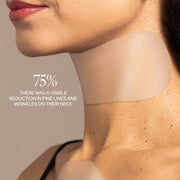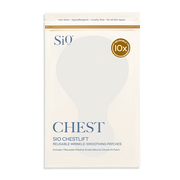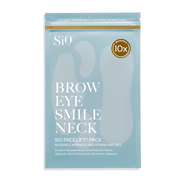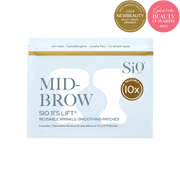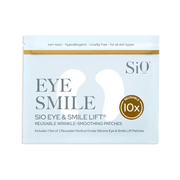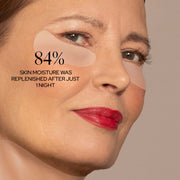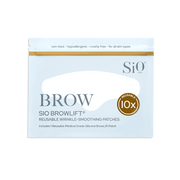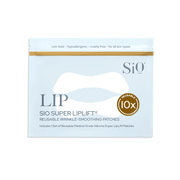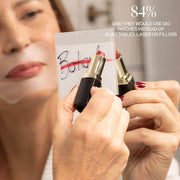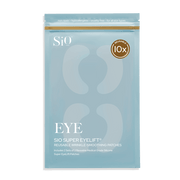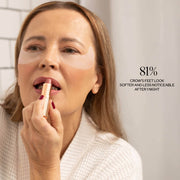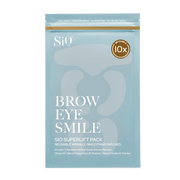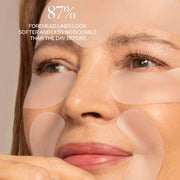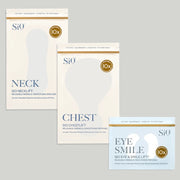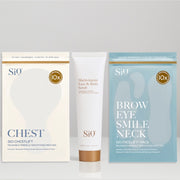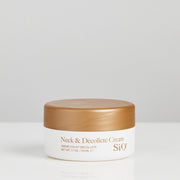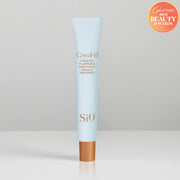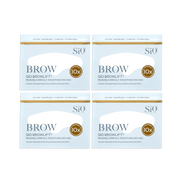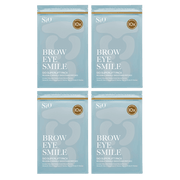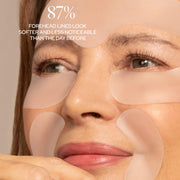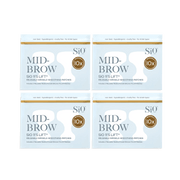12 Easy Tips For Hydrating And Healing Dry Facial Skin

Do you know someone who always has hydrated, radiant, glowing skin all year round, year after year? Neither do we. You’d have better luck finding an actual pet unicorn than someone who has never had dry skin. It happens to the best of us.
Unfortunately, a woman’s face is usually the first place one notices the appearance and feel of dry skin. To top it all off, dry facial skin is often more annoying—and more noticeable—than dry skin on, say, your knees or elbows.
So, if you’re wondering how to make those dry patches on your face as smooth as a baby’s bottom, you’re in the right place! The beauty experts at SiO Beauty will tell you everything you need to know.
In this post, we’ll go over the difference between dry skin and dehydrated skin, as well as the causes of dry facial skin. Then we’ll reveal the 12 best ways to hydrate and heal your face so that only beautiful, glowing skin shines through.
Is The Skin On My Face Dry or Dehydrated?

It might seem like we’re splitting hairs, but there’s actually a huge difference between dry skin and dehydrated skin. If you aren’t clear on this not-so-subtle distinction, don’t worry! We’ve got you covered.
Dry Skin
Dry skin means that your skin isn’t producing or replenishing enough of its own natural oils. But wait, isn’t oily skin a bad thing? We often think so, but that isn’t exactly true.
Your body naturally produces an oil called sebum to protect and moisturize your skin. Sebum also helps the outer layers of your skin retain water, which keeps it hydrated. While excessively oily skin can lead to breakouts, we all need a certain amount of sebum on our skin for it to be healthy, glowing and moisturized.
Without enough sebum, you will likely experience a number of symptoms associated with dry skin, including:
-
Redness
- Itching
- Flaking
Dehydrated Skin
Whereas dry skin is caused by low levels of oil on your skin, dehydrated skin means there’s not enough water. So your skin can be dehydrated while still having plenty of oil, or it can be both dehydrated and dry at the same time.
Think about grapes and raisins for a moment. A grape is hydrated and full of moisture. A raisin, on the other hand, is dried out and has no liquid inside. Think of your skin in the same way. You want it to be full of water so that it’s plump, smooth, and wrinkle-free—like the grape!
How can you tell if your skin is dehydrated instead of simply dry? Dehydrated skin tends to lack its normal luster, so it may appear dull or pale. So if your face is missing its usual glow, then your skin is probably dehydrated.
What Are The Main Causes Of Dry Facial Skin?
Here’s a list of the most common causes of dry facial skin.
Environment
The environment you live in has a huge impact on your skin—especially the skin on your face, as it’s almost always exposed to the elements.
If you live in a hot, dry climate, you’ll probably have to work harder to keep your facial skin hydrated. The same applies to environments characterized by cold weather and wind.
Genes
Another major cause of dry facial skin is DNA. Your genes determine what skin type you have. So some of us have skin that’s naturally oily, while others have skin that tends to be a little dry.
While no one skin type is either good or bad, it’s important to know what type of skin you have and understand how to take care of it.
Aging
As we grow older, our skin ages and becomes less capable of producing sebum, the natural body oil we mentioned earlier. Less sebum means less moisture, thus our skin tends to become drier on average as we age. Aging also makes it more difficult for your facial skin to retain water, possibly leading to dehydration.
Lifestyle
Certain lifestyle choices may also lead to dry facial skin. To treat and prevent dry skin on your face, you should avoid:
- Smoking
- Drinking too much alcohol
- Excessive tanning (outdoors or at a salon)
- Spending too much time in direct sunlight
How Do I Get Rid Of Dry Facial Skin?

Serums and ointments can help hydrate your skin, but if it’s serious results you’re after, look no further! We have exactly what you need.
SiO Beauty patches are the fastest, most effective way to heal and hydrate dry facial skin. And the hydration that is replenished with these patches doesn’t just fix dry skin—it also helps to get rid of wrinkles and fine lines.
Made from the highest quality medical-grade silicone, SiO’s patches create the ideal microclimate between the patch and the surface of your skin. This microclimate bathes your skin in moisture and hydration while you sleep, allowing for maximum replenishment, rejuvenation, and visible wrinkle reduction.

Dr. Lian Mack, a Cosmetic Dermatologist based in New York, agrees that “medical grade silicone definitely has its use in our cosmetic toolbox.” When speaking about the effects of SiO Beauty patches, Dr. Mack states that they “hydrate the skin, making the area appear more youthful, smooth, and rejuvenated.”
So how can you experience these incredible results for yourself? Simply apply SiO FaceLift patches—Eye & Smile, BrowLift, and NeckLift—after your nightly cleansing routine. Then get a good night’s rest and wake up to plumper, firmer, smoother, and more radiant skin!
12 Tips For Hydrated Skin
In addition to SiO Beauty patches, here are 12 super simple steps you can take to keep your face healthy, hydrated, and radiant!
Use Warm (Not Hot!) Water To Wash Your Face
Hot water isn’t good for facial skin because it washes away the sebum that your skin needs to retain moisture. A good solution is to use lukewarm water when washing your face.
Take Short Showers
The longer your facial skin is exposed to water, the more natural oils get washed away. Since these oils keep your skin moist and hydrated, it’s important to limit the amount of time you spend in the shower. Try to keep your showers under 10 minutes.
Consider The Weather
When it’s windy, cold, or extremely hot outside, take extra precautions for your skin. This is especially true for the skin on your face, which is almost always exposed to the elements. Wear scarves in the winter and broad-brimmed hats in the summer.
Protect Your Face From The Sun
Always apply sunscreen to your face before taking off in the morning. Even if it isn’t hot or sunny outside, the sun’s powerful UV rays can still damage your skin. On days when the sun is shining bright, wear a hat and sunglasses.
Use Facial Cleansers
Many soaps are too harsh for the delicate skin on your face. To minimize dry skin, opt for a gentle facial cleanser with moisturizing properties. Look for cleansers with natural ingredients and oils.
Cleanse Your Skin Gently
When washing your face, don’t scrub too vigorously. You shouldn’t see a thick lather on your skin. Gently apply the cleanser to your face before carefully rinsing it away with lukewarm water.
Moisturize
You might already do this, but it’s best to moisturize your face at least twice a day: once after you shower in the morning and once again after you cleanse your face at night. Applying your moisturizer immediately after cleansing helps to keep the moisture locked in.
Use The Right Kind Of Moisturizer

Believe it or not, certain moisturizers can actually dry out your skin. So when you’re choosing a moisturizer, look for products with ingredients like shea butter, coconut oil, sunflower seed oil, and other anti-aging plant extracts.
Exfoliate
You know all the dry, flaky spots on your face? That’s actually dead skin! Exfoliate once or twice per week to get rid of dead skin cells and clear the way for younger-looking, healthier skin.
Pat (Don’t Rub!) Your Face Dry
After showering or washing your face, gently pat your skin dry with a soft towel. Never rub your face, as this can cause further damage and irritate dry facial skin.
Use A Humidifier
Humidifiers add moisture to the air in your home, which can help treat dry facial skin. With more water content in the air, it’s easier for your skin to retain moisture and hydration.
Eat Well And Drink Plenty Of Water
Your skin loves healthy Omega-3 fatty acids, so try to include foods like almonds, salmon, and avocado in your diet. Fruits and vegetables help, too.
Finally, remember to drink plenty of water! This will help keep your skin healthy and hydrated from the inside out.
Everyone gets dry facial skin from time to time. But with SiO Beauty patches, you can rejuvenate and rehydrate your skin overnight! On top of that, use the 12 tips we’ve shared here to make sure your skin is always healthy, hydrated, and glowing. Don’t let a few dry patches stop you from having gorgeous, glamorous skin!



